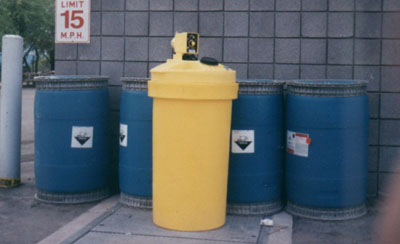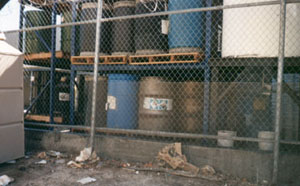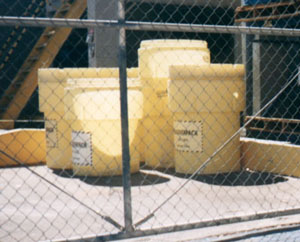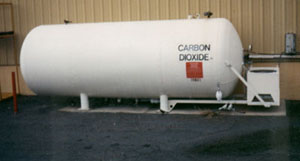
Unless these barrels are empty, they should be in a bermed area to capture any accidental spills or leakage. (A berm is just a raised barrier around an area to contain a spill. A berm outside of a building usually is made out of concrete. Inside a building, the berm may be plastic-coated concrete. A facility owner/operator definitely should consult RCRA to be sure to be in compliance with current regulations.) The blue color of the plastic barrels usually indicate that they are for containing acids or strong bases. Empty, used chemical containers (barrels) should be segregated away from unused, fresh containers full of chemicals.

It would be difficult for an emergency responder to determine what is in any of these barrels during an incident. Note that the barrels are on wooden pallets and stacked onto a type of metal shelf. A facility needs to be careful that incompatible chemicals that could react in the event of a leak or fire are not stacked or stored next to each other.

Some barrels may just contain small amounts of chemical waste, such as oily rags.

This tank of Carbon Dioxide would be a Sudden Loss of Pressure hazard at a facility. It is good that it is so clearly labelled. A large release could displace oxygen away from the rupture.

Black barrels usually contain acids. Blue barrels can be acids or bases. Note these barrels are all off the ground and on pallets. But berms and other spill containment are not evident. If a forklift accidentally punctured one of these barrels, how would the spill be contained or confined to a small area? Such a spill would still not be likely to cause off-site consequences, but could put employees or responders at risk.